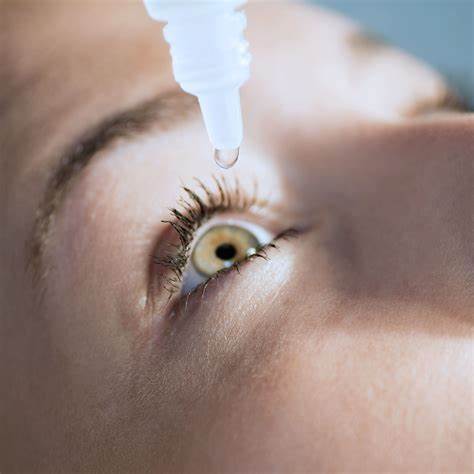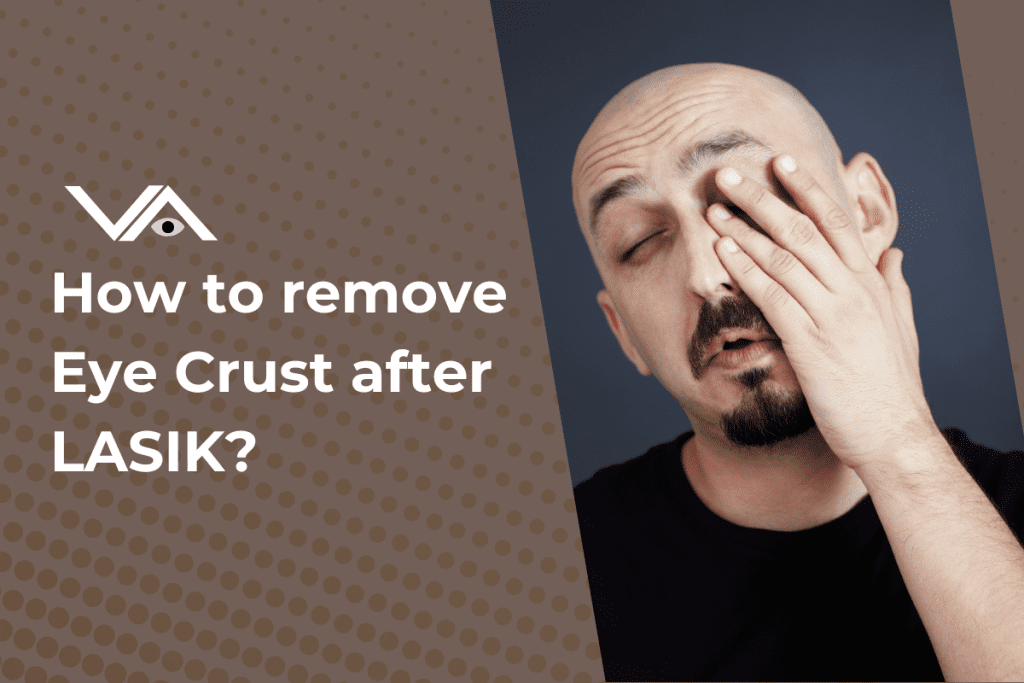Table of Contents
ToggleMyopia (nearsightedness), hyperopia (farsightedness), and astigmatism are among the refractive vision defects that can be corrected surgically using LASIK (Laser-Assisted In Situ Keratomileusis). The patient goes through a comprehensive preoperative examination to see if they are a good candidate for LASIK and to develop a specialized treatment plan. So, How to Remove Eye Crust After Lasik? Let’s check!.

After the cornea is reconstructed, the corneal flap is repositioned and attached without the need for stitches. This distinctive feature of LASIK enables rapid healing and a relatively painless healing procedure. High success rates, short recovery times, and long-lasting outcomes are all features of LASIK. After the treatment, many patients report seeing better within a day or two and continue to have years of good vision. While the majority of individuals benefit from LASIK after just one operation, others may need modifications or subsequent therapies for the best outcomes.
Overall, LASIK has changed the way that vision correction is done, giving patients more visual independence and a better overall quality of life.

How to remove eye crust after Lasik?
It is typical to encounter some eye crust or discharge in the days following LASIK eye surgery. This post-operative eye discharge is a normal aspect of recovery and often goes away by itself. To achieve quick recovery, you must, however, handle your eyes carefully and practice good cleanliness.
The reasons for eye crust after LASIK surgery, how to treat it, and advice for fostering comfort and healing during the healing process are all covered in this thorough manual.
Understanding Post-LASIK Eye Crust
Eye crust, commonly referred to as “sleep,” “gunk,” or “rheum,” is the dried discharge that gathers at the corners of the eyes, particularly upon awakening. This discharge is made up of dead skin cells, oil, tears, and mucus that had accumulated while you were sleeping. Your eyes may weep a little bit more than usual after LASIK surgery while they heal, which might result in the development of the eye crust.
The Importance of Good Cleanliness
After LASIK, maintaining good cleanliness is essential to preventing infection and promoting recovery. Always properly wash your hands before touching your eyes to prevent contaminating the delicate post-operative region with bacteria or dirt.
Avoid Rubbing Your Eyes:In the initial few days following LASIK surgery, refrain from rubbing or scratching your eyes since this might irritate the eyes and perhaps slow the healing process. Use lubricating eye drops (recommended by your doctor) to relieve pain or irritation if you feel any.
Follow Your Doctor’s Advice: Your LASIK surgeon will give you post-operative instructions on how to look after your eyes and deal with any discharge or crust, so make sure you follow them. To achieve a speedy recovery and the best outcomes, carefully follow these directions.
Use Prescribed Eye Drops:
To prevent infection and relieve inflammation, your surgeon may recommend medicated eye drops. As directed, use these drops to keep your eyes pleasant and moist while supporting recovery.
Cleaning the Eye Crust:
To get rid of the eye crust, use the following actions:
Wash Your Hands:
To prevent introducing any bacteria, properly clean up with cleanbeforewater prior to touching your eyes.
A clean, soft cloth or cotton pad should be soaked in warm water. To prevent burning your eyes, make sure the water is not too hot.
Soak a Clean Cloth:
Close one eye, then use a moist cloth or cotton pad to clean the corner of the closed eye gently. Be cautious not to rub or press too firmly.
Repeat for the Other Eye:
Use a different towel or cotton pad to do the procedure for the other eye.
Dispose of the Cloth or Pad:
Place the cloth or cotton pad in the right trash after use to prevent cross-contamination.
Use Artificial Tears:
Your surgeon may advise you to use artificial tears regularly to keep your eyes moist and hydrated to prevent the development of the crust.
Avoid Eye Makeup:
It’s advisable to refrain from wearing eye makeup during the first healing time since it might irritate the eyes and hinder the healing process. Furthermore, cosmetic brushes and applicators could contain germs that cause infections.
Keep Your Face Clean:
Avoid touching your eyes needlessly, and keep your face clean. For a few weeks following surgery, refrain from swimming or utilizing hot tubs to reduce the risk of infection.
Sleep with a Protective Shield:
During your first healing time, your surgeon can provide you with a protective shield or barrier to wear while you sleep. This barrier stops unintentional rubbing or touching of the eyes while you are sleeping.
Follow-up sessions:
Attend all planned follow-up sessions with your LASIK surgeon to check on the progress of your eyes’ healing and to discuss any potential issues you may have.
Report Any Unusual Symptoms:
Contact your surgeon right away if you suffer any unusual or alarming symptoms, such as excruciating pain, heavy discharge, persistent redness, or a rapid reduction in eyesight.
Be patient:
During the first several days following LASIK, small discomforts like eye crust are typical. Within the first few days or weeks, the majority of these symptoms go away. For a smooth and effective recovery, practice patience and pay attention to your doctor’s instructions.
After LASIK, What may be the causes of eye crust?
Following LASIK surgery, a number of variables may lead to the development of eye crust :
Tear production may rise when your eyes recover from LASIK, which might result in greater eye discharge.
Use of Eye Drops:
After LASIK, medicated eye drops may potentially cause the development of an eye crust.
Following LASIK, some patients may develop temporary dry eyes, which causes an increase in eye discharge.
Healing:
As the cornea and surrounding tissues heal following surgery, the eye crust forms naturally as part of the healing process.
The majority of the time, post-LASIK eye crust is a transitory, common phenomenon that goes away as the eyes recover. However, don’t be afraid to ask your LASIK surgeon for advice if you have any worries regarding the quantity or kind of eye discharge.
When to Get in Touch with a Surgeon :
While slight discomfort and eye crust are typical during the first phase of rest and recovery, the following signs and symptoms should be discussed with your LASIK surgeon right immediately :
Mild discomfort is usual, but severe or long-lasting pain might be a sign of something more serious.
Excessive Discharge:
Get in touch with your surgeon if you detect a notable increase in eye discharge that is accompanied by redness or discomfort.
Seek emergency medical assistance if you encounter unexpected changes in your eyesight or a major loss of vision.
Mild redness is normal, but if it continues or gets worse over time, talk to your surgeon.
Light Sensitivity:
While some degree of light sensitivity is acceptable, if it worsens or does not get better, let your surgeon know.
Any Unusual Symptoms:
Do not hesitate to contact your surgeon if you encounter any symptoms that worry you or are not included in your post-operative instructions. These are all possible cases of when it is the right time to concern your doctor. But the success rate of Lasik surgery is 99 percent. So these may be possible in rare cases.
Conclusion
After LASIK surgery, eye crust is a typical occurrence and a normal component of the recovery process. You may safely eliminate eye crust and encourage healing after LASIK by adhering to good hygiene procedures, using the recommended eye drops, and refraining from rubbing your eyes. It’s crucial to show up for all follow-up appointments with your LASIK surgeon and to let them know right away if any uncomfortable symptoms arise.
Though minor discomforts are normal during the healing process, major pain or changes in vision should be attended to right once. You may reap the full advantages of LASIK and enjoy clear, enhanced vision without the need for glasses or contact lenses by following your surgeon’s instructions and exercising patience during the healing process.













